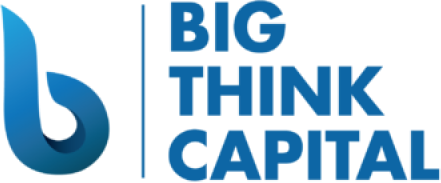Navigating the Recent Fed Interest Rate Hike: Innovative Financing Tools for Small Businesses
Estimated reading time: 5 minutes
- Explore alternative financing options to overcome rising costs.
- Leverage long-term financing solutions like SBA loans for better cash management.
- Stay aware of your cash flow to make informed financial decisions.
Table of Contents
- Understanding the Federal Reserve’s Recent Actions
- Innovative Financing Solutions for Small Businesses
- Practical Insights for Business Owners
- Conclusion
- FAQ
Understanding the Federal Reserve’s Recent Actions
The Federal Reserve’s decision to raise interest rates is rooted in the need to control inflation, which affects the purchasing power of consumers and the overall economy. In 2024, the Fed has aimed to strike a balance between fostering economic growth and maintaining price stability. The current benchmark interest rate stands at 5.25% to 5.50%, which is a notable increase from previous years.
This upward trend in interest rates directly impacts various financing options available to small businesses. Here’s how rising rates influence business financing:
- Higher Loan Costs: Traditional bank loans become more expensive as interest rates rise. This can make it less appealing for business owners to take on new debt.
- Increased Credit Card Interest: For businesses relying on credit cards, higher rates can lead to increased costs, making it harder to manage cash flow.
- Equity Financing Alternatives: With loans costing more, some businesses may turn to equity financing. However, this also comes with its own set of challenges and considerations.
Innovative Financing Solutions for Small Businesses
While rising interest rates present challenges, they also encourage creativity in securing funding. Various alternative financing solutions can provide viable options for business owners looking to navigate this landscape. Here are some innovative tools to consider:
Working Capital Advances
Working capital advances are short-term financing solutions designed to provide quick liquidity. They allow businesses to access funds based on future credit card sales or receivables. Here are some key features:
- Speed of Funding: Access to funds is often rapid, usually within days, making it suitable for businesses needing immediate capital.
- Flexible Repayment Terms: Payments are typically tied to sales, allowing businesses to repay during periods of higher revenue.
- No Collateral Required: Unlike traditional loans, working capital advances usually do not require collateral, reducing risk for the borrower.
SBA Loans
The Small Business Administration (SBA) offers guaranteed loans that can provide long-term funding with lower interest rates. Despite some increases, these loans remain an attractive option for many small businesses. Essential benefits include:
- Longer Repayment Terms: SBA loans feature extended repayment periods, often ranging from 10 to 25 years. This can ease the impact of monthly payments on cash flow.
- Lower Down Payments: Many SBA loans require minimal down payments compared to other financing options.
- Access to Larger Loan Amounts: Depending on the specific SBA loan program, businesses can access substantial funding that might otherwise be unavailable.
Equipment Financing
For businesses that rely on equipment to operate, equipment financing can be an excellent solution. This type of funding allows businesses to purchase necessary machinery or technology without a substantial upfront investment. Key advantages are:
- Asset-Based Financing: The equipment itself serves as collateral, which may reduce the need for personal guarantees.
- Tax Benefits: Businesses can often claim depreciation on equipment, providing potential tax advantages.
- Flexible Options: Many lenders offer tailored financing solutions that can be adjusted based on seasonal needs or specific cash flow situations.
Merchant Cash Advances (MCA)
Merchant cash advances provide a lump sum payment in exchange for a percentage of future credit card sales. This innovative funding can be particularly useful for businesses experiencing fluctuating revenue. Considerations include:
- Rapid Approval Process: MCAs typically have a streamlined application process, helping businesses access funds quickly.
- Daily or Weekly Repayment: Repayment is tied to sales volume, allowing businesses to manage cash flow effectively.
- Limited Impact on Credit Score: MCA providers often focus more on business sales rather than credit scores, making it accessible to a wider range of entrepreneurs.
Lines of Credit
A business line of credit offers flexibility for managing short-term financial needs. Unlike traditional loans, lines of credit allow businesses to withdraw funds as necessary, only paying interest on the amount borrowed. Benefits include:
- Flexible Access: Draw from the line of credit when needed, which is ideal for managing unexpected expenses or cash flow gaps.
- Revolving Nature: As you repay the borrowed amount, your credit line replenishes, allowing continued access to funds.
- Variety of Uses: Use the funds for inventory purchases, emergency expenses, or growth initiatives without needing to reapply for a loan.
Practical Insights for Business Owners
Navigating the current economic environment and adapting to rising interest rates can be daunting. Here are three practical takeaways for small business owners:
- Explore Alternative Financing Options: Considering non-traditional financing sources such as working capital advances, equipment financing, or merchant cash advances can provide immediate liquidity without the burdens of high-interest traditional loans.
- Leverage Long-Term Financing: If substantial capital is needed, consider SBA loans, which can offer lower costs over time and have more flexible terms. While they may take longer to secure, the long-term benefits can be invaluable.
- Maintain Cash Flow Awareness: Understanding your cash flow is crucial in this environment. Develop a clear strategy for managing expenses and income, considering how financing decisions will impact your overall financial health.
Conclusion
The recent Federal Reserve interest rate hike has undoubtedly changed the borrowing landscape for small businesses. However, with innovative financing solutions such as working capital advances, SBA loans, equipment financing, and more, entrepreneurs can still find the resources they need to grow and succeed.
At Big Think Capital, our goal is to equip small business owners with the knowledge and resources necessary to navigate these challenges effectively. Whether you’re exploring alternative financing options or seeking guidance on structuring your financial strategy, we are here to help.
For personalized support and further information on financing options tailored to your business needs, visit bigthinkcapital.com or speak with one of our funding experts today. Let’s work together to ensure your business thrives, even in an evolving economic landscape.






